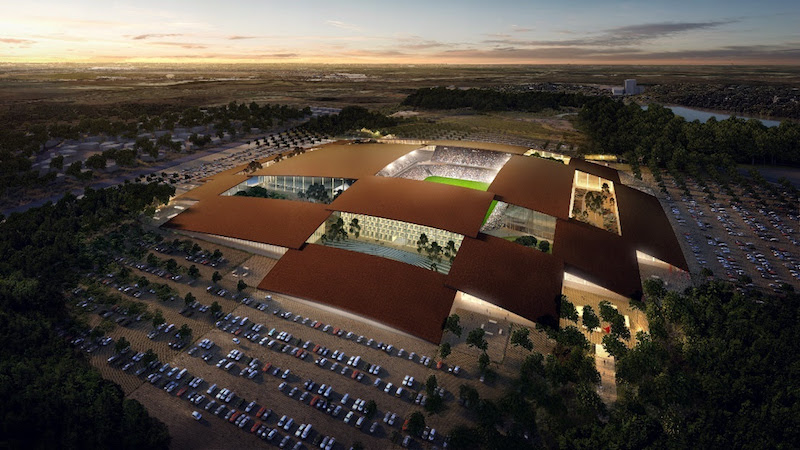Spread across 1.3 million sf in Austin, Texas the new East Austin District will provide the fast-growing city with its first pro-sports stadium and large-scale music arena.
The 40,000-seat outdoor bowl is designed for large-scale soccer and rugby matches, music festivals, and other major events. The 15,000-seat multi-purpose arena is connected to the stadium and will serve as the home for Rodeo Austin, musical acts, basketball, and hockey.
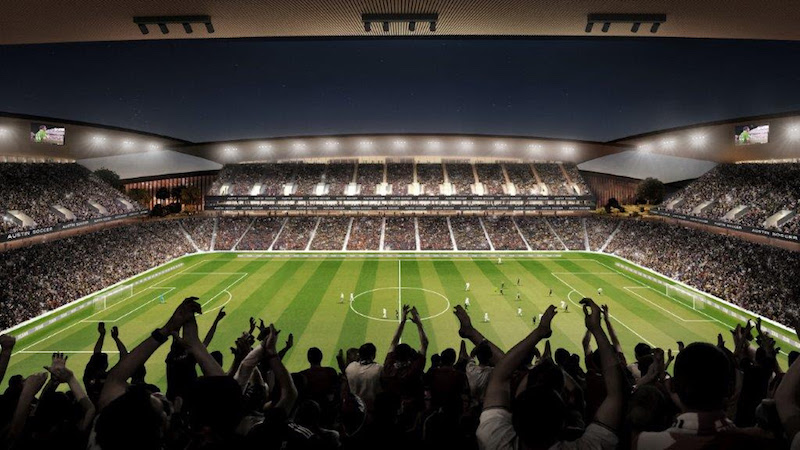 Rendering courtesy of BIG.
Rendering courtesy of BIG.
The stadium and arena are joined by 190,000-sf of premium facilities and support functions. The separate buildings are unified by all-wooden interiors. Eight courtyards act as outdoor living rooms that connect the entire district. Visitors can gather in the public parks and plazas for communal gatherings, food truck scenes, recreation, and concerts. At the edge of the district are buildings for retail, shopping, dining, and hospitality. Youth education and enrichment are promoted via 28,000-sf of youth facilities.
 Rendering courtesy of BIG.
Rendering courtesy of BIG.
“Like a collective campus rather than a monolithic stadium, the East Austin District unifies all the elements of rodeo and soccer into a village of courtyards and canopies,” says Bjarke Ingels, Founding Partner, BIG, in a release. “Embracing Austin’s local character and culture, the East Austin District is a single destination composed of many smaller structures under one roof.”
The entire district is laid out in a checkerboard that appears as a latticed roofscape from above. The roof offers protection from the elements as well as a home for red photovoltaic panels that allow the entire district to be self-sufficient. The plan is for East Austin District to one day share its energy resources community-wide to power East Austin’s electricity and economy.
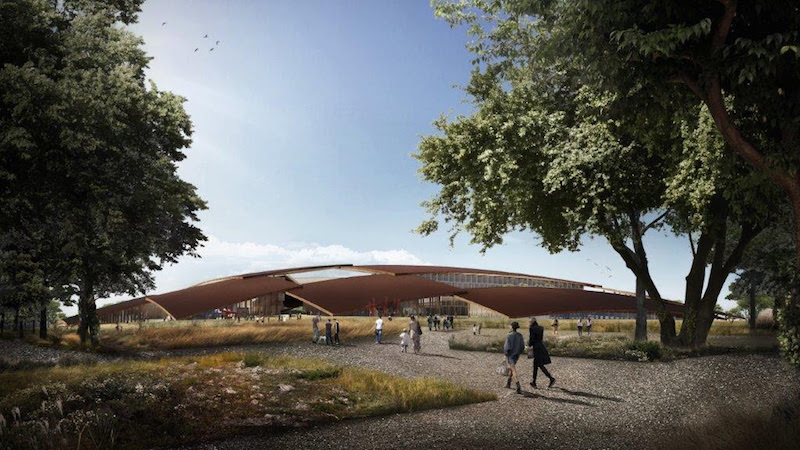 Rendering courtesy of BIG.
Rendering courtesy of BIG.
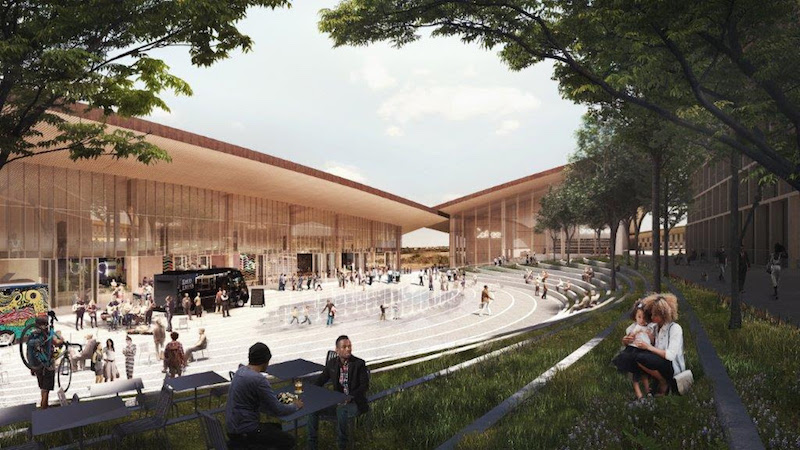 Rendering courtesy of BIG.
Rendering courtesy of BIG.
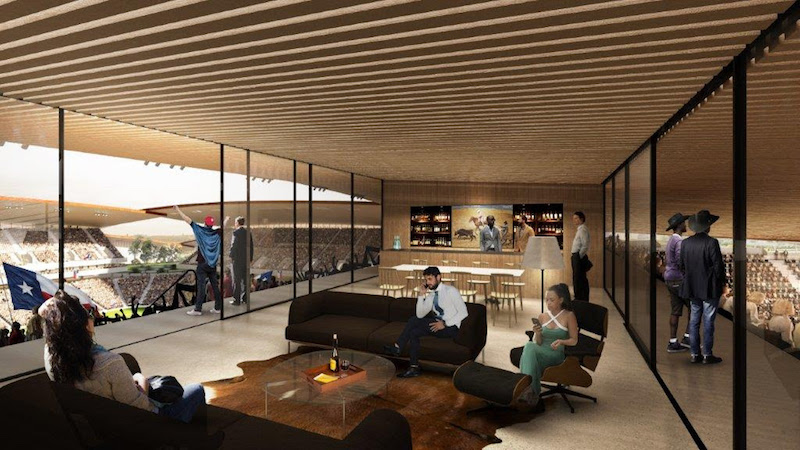 Rendering courtesy of BIG.
Rendering courtesy of BIG.
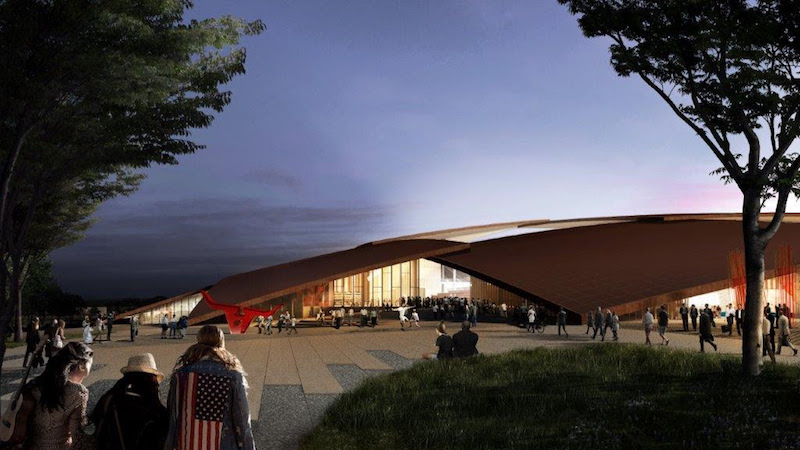 Rendering courtesy of BIG.
Rendering courtesy of BIG.
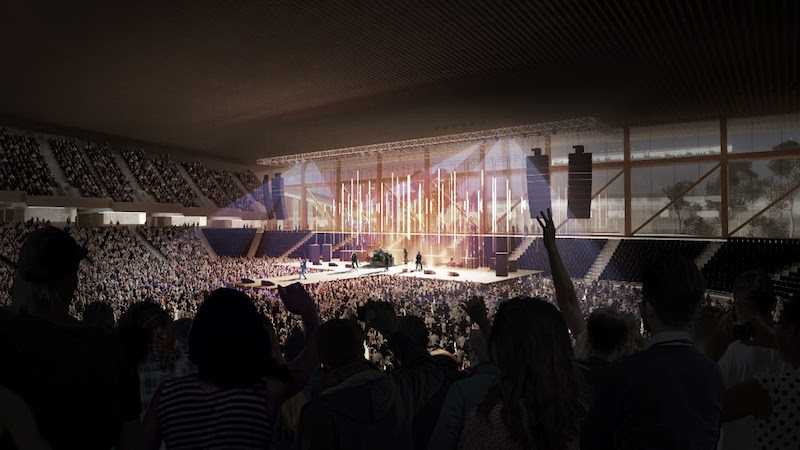 Rendering courtesy of BIG.
Rendering courtesy of BIG.
Related Stories
| Mar 1, 2012
Bomel completes design-build parking complex at U.C. San Diego
The $24-million facility, which fits into a canyon setting on the university’s East Campus, includes 1,200 stalls in two adjoining garages and a soccer field on a top level.
| Feb 24, 2012
Skanska hires Tingle as senior VP and national director for its Sports Center of Excellence
Tingle has worked in the architecture and construction industries for more than 30 years, and for the last 23 years, he has focused primarily on large-scale sports construction projects
| Feb 2, 2012
Shawmut Design and Construction launches sports venues division
Expansion caps year of growth for Shawmut.
| Jan 31, 2012
Fusion Facilities: 8 reasons to consolidate multiple functions under one roof
‘Fusing’ multiple functions into a single building can make it greater than the sum of its parts. The first in a series on the design and construction of university facilities.
| Nov 29, 2011
SB Architects completes Mission Hills Volcanic Mineral Springs and Spa in China
Mission Hills Volcanic Mineral Springs and Spa is home to the largest natural springs reserve in the region, and measures 950,000 sf.
| Nov 11, 2011
Streamline Design-build with BIM
How construction manager Barton Malow utilized BIM and design-build to deliver a quick turnaround for Georgia Tech’s new practice facility.
| Nov 9, 2011
Sika Sarnafil Roof Recycling Program recognized by Society of Plastics Engineers
Program leads the industry in recovering and recycling roofing membrane into new roofing products.
| Nov 1, 2011
Sasaki expands national sports design studio
Sasaki has also added Stephen Sefton to the sports design studio as senior associate.
| Oct 20, 2011
UNT receives nation’s first LEED Platinum designation for collegiate stadium
Apogee Stadium will achieve another first in December with the completion of three wind turbines that will feed the electrical grid that powers the stadium.


